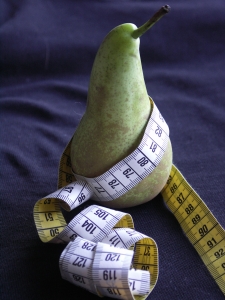Researchers with Deakin’s School of Medicine monitored the height and weight of 1,494 women in 1993-1997 and 1,076 in 2004-2008 to determine any shift in body mass index (BMI). They found the average BMI increased from 26 to 27.1, while the rate of morbid obesity rose from 2.5 per cent to 4.2 per cent of the women in the study.
With obesity continuing to be one of the biggest health issues facing Australians, Deakin’s Associate Professor Julie Pasco said it was important that we monitor not only the growing rates of obesity generally, but also keep a close eye on the rates of morbid obesity.
"We tend to monitor obesity based on the proportion of the population whose BMI exceeds 30. What this fails to measure is the number of people who are morbidly obese, that is those whose BMI in greater than 40," Associate Professor Pasco explained.
"It is important that we monitor the growing number of people who are morbidly obese as the adverse health risks amplify as the level of obesity increases.
"Obesity-related health expenditure exceeded $8billion in 2008 and we are seeing service providers increasingly having to invest in equipment designed to accommodate the morbidly obese. It is therefore not unreasonable to expect that with rates of morbid obesity on the rise, the direct and indirect costs will also increase."
For this study the researchers set out to determine how the prevalence of morbid obesity, as indicated by a BMI greater than 40, had changed over a decade among women living in south-eastern Australia.
The study looked at the BMI of women involved in the Geelong Osteoporosis Study, during two time periods, ten years apart. Height and weight measurements for 1,494 women (aged 20—94 years) during 1993—1997 and for 1, 076 women (aged 20—93 years) during 2004—2008, to see if there had been any changes in BMI.
The researchers found that average BMI increased from 26 in 1993-7 to 27.1 in 2004-8. The prevalence of morbid obesity increased from 2.5 per cent to 4.2 per cent of the women in the study. The increase in BMI and prevalence of morbid obesity were seen for all ages and across the socioeconomic spectrum.
"The results of our study highlight the growing problem of morbid obesity," Associate Professor Pasco said.
"The challenge continues to be to identify and implement effective strategies for the whole community that will shift the scales in the direction of lowering the rates of obesity and most particularly morbid obesity."

